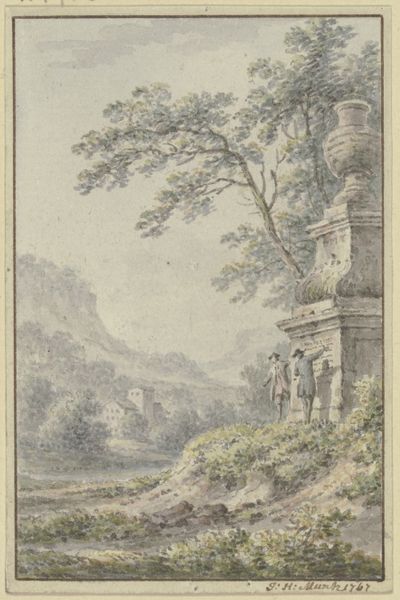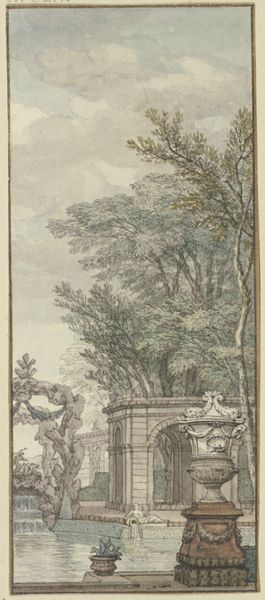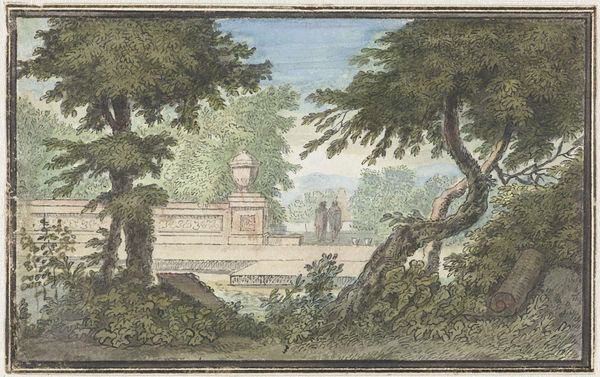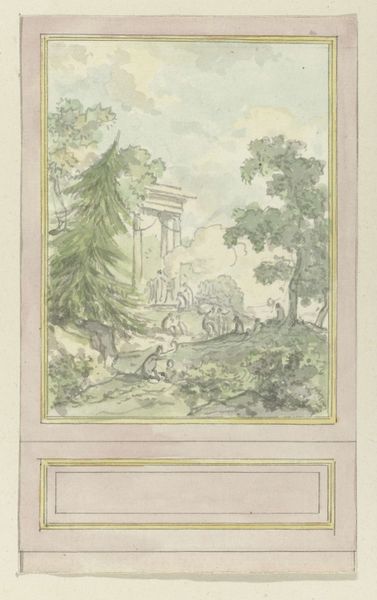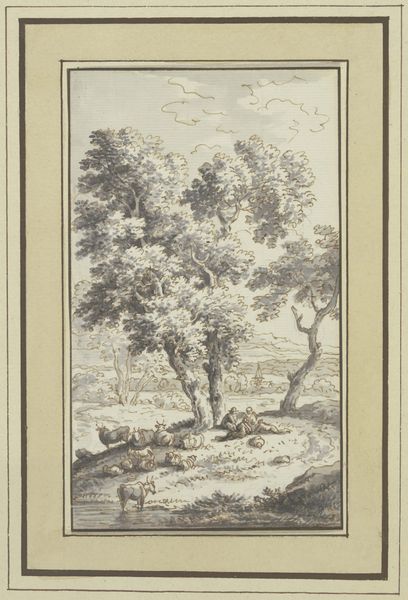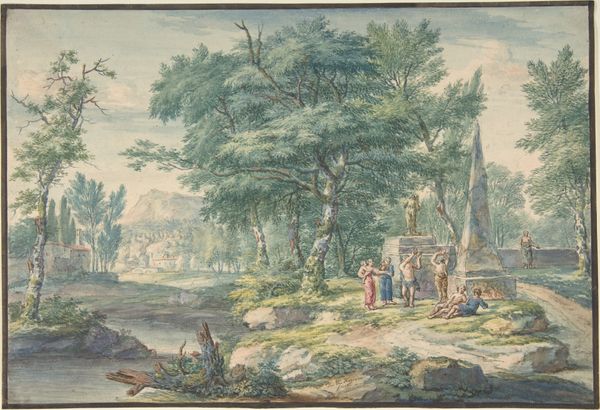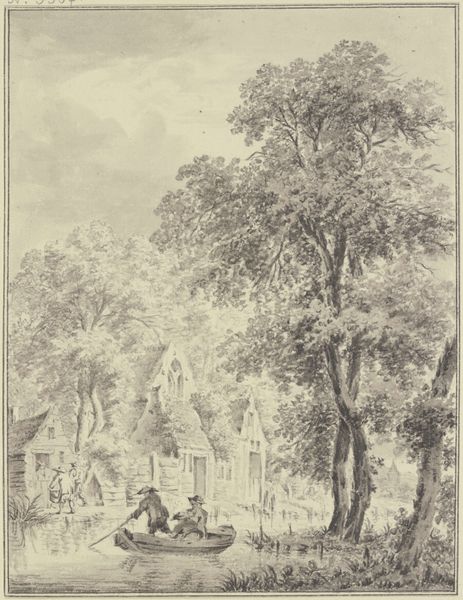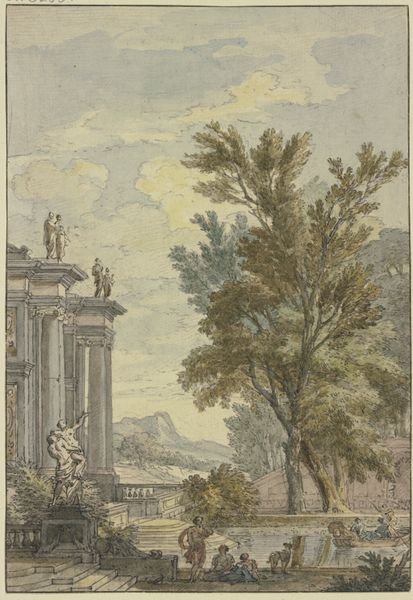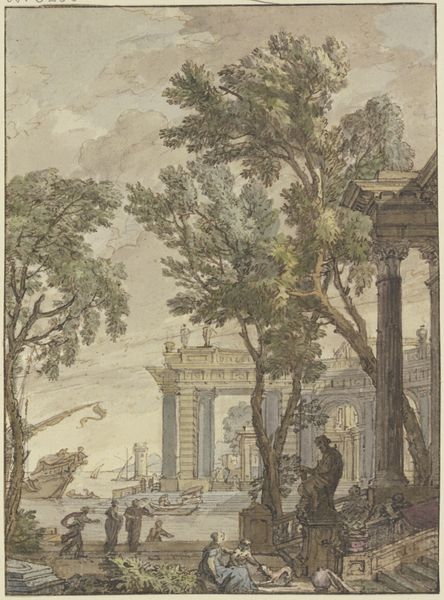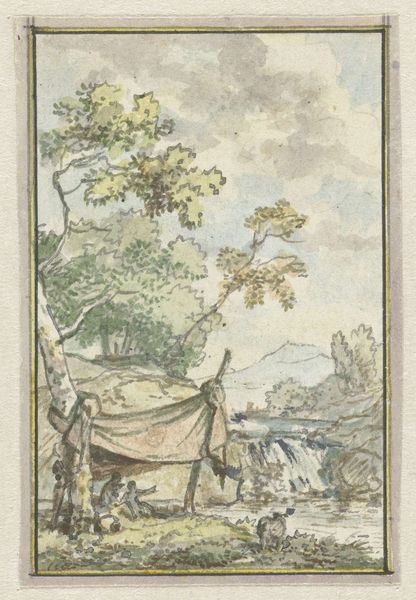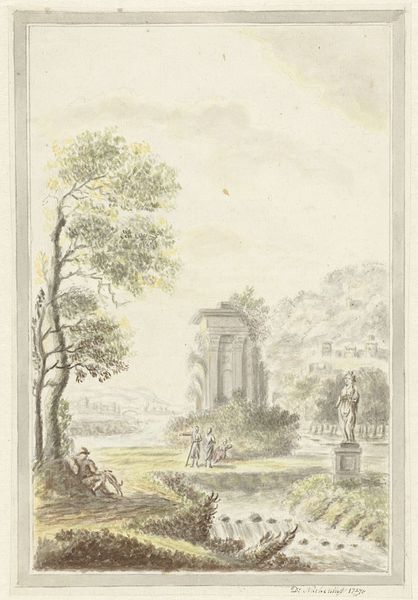
watercolor
#
neoclacissism
#
landscape
#
watercolor
#
coloured pencil
#
history-painting
Dimensions: height 101 mm, width 78 mm
Copyright: Rijks Museum: Open Domain
Curator: We’re standing before Jurriaan Andriessen’s "Landschap met tempelruïne," a watercolor housed here at the Rijksmuseum and dated roughly between 1752 and 1819. What catches your eye first? Editor: It’s melancholic. The muted palette, the crumbling ruin... it speaks of decay but in a very picturesque way. There’s something unsettling about the contrast between the classical structure and the ordinary people in the foreground. Curator: Andriessen worked during a period when Neoclassicism was really taking hold. There was a fascination with antiquity, but also with history painting and idealized landscapes. This watercolor captures that duality; a desire to evoke a specific history. Editor: Right, and that makes me think about the watercolor medium itself. It's so delicate and fugitive. Was this always considered 'fine art,' or was it initially for studies, maybe preliminary sketches for something bigger? Because when you look at those working people near the shore you ask what kind of labour is going on here. Curator: That’s interesting to consider. The transparency and fluidity of watercolor allowed for quick sketches, so these paintings circulated and fulfilled the desire for landscapes from the bourgeoisie of the late 18th century. So there's already a context here about art as merchandise. Editor: A demand catered by the means and materials available… I’m also curious about the implied scale. Watercolor, by nature, suggests something intimate. So how does that size then interact with a historical monument that wants to appear monumental? Curator: Well, this was part of a growing artistic practice that elevated landscape and ruins into moral lessons and aesthetic pleasure. Andriessen presents a past meant to evoke thought and appreciation but as part of an art market increasingly geared toward private display. Editor: Makes me think about labor too… who mined the pigments for these watercolors, who made the brushes? Even this idyllic scene relies on often invisible hands to be created. Thanks, that’s a great insight to keep in mind. Curator: A good point, and food for further thought next time.
Comments
No comments
Be the first to comment and join the conversation on the ultimate creative platform.

